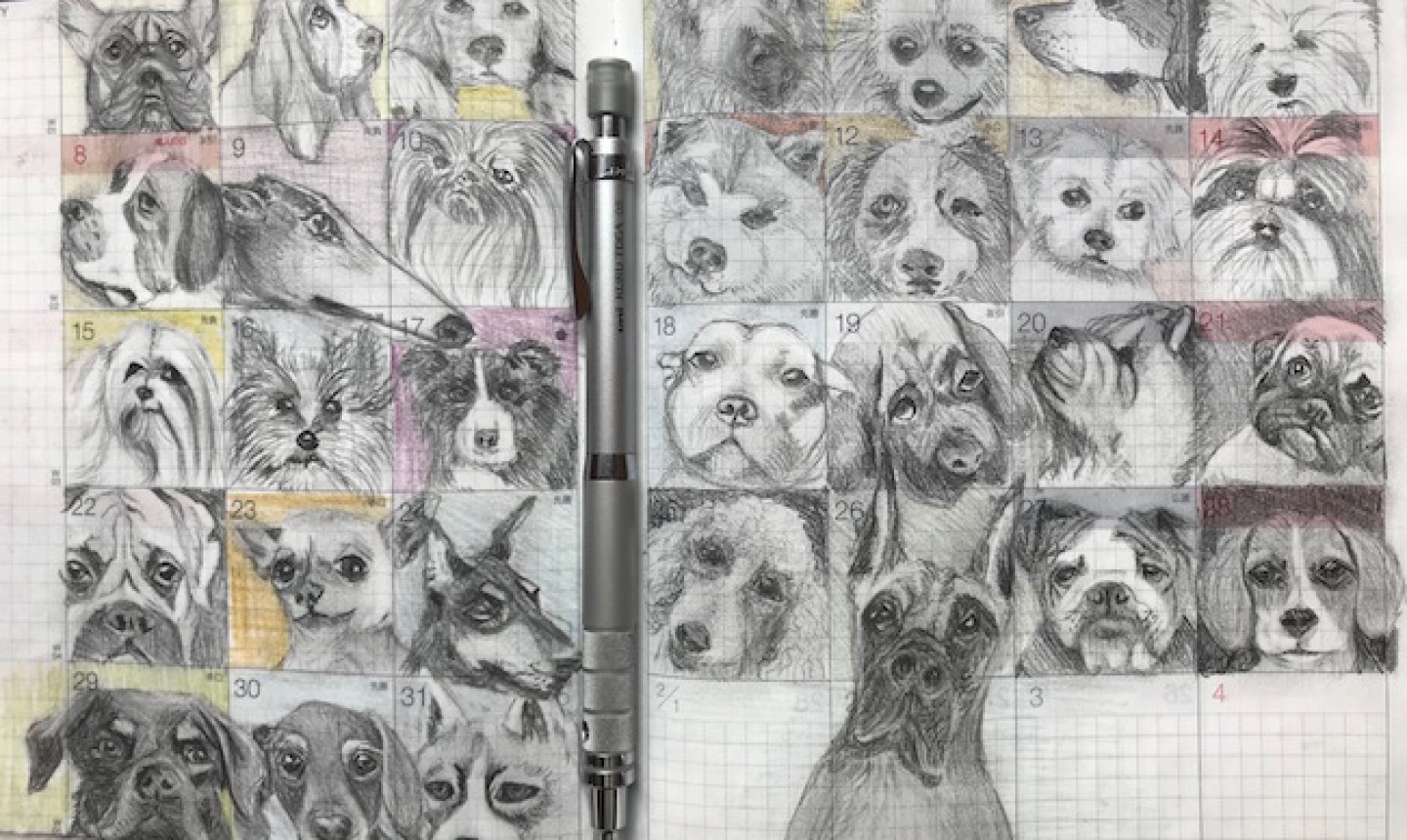
If I had to give you one piece of advice on how to progress as an artist, it would be this: Keep a daily sketchbook.
Life can get busy and sometimes — maybe even oftentimes — there just aren't enough hours in the day for extended drawing or painting sessions. But I can always fit in five to ten minutes for my sketchbook habit. And so I do, every single day without fail. It keeps me fluid, enhances my observational skills, gives me a place to try new things, and serves as a record to look back on.
If you want to start a daily sketchbook habit, here's what to know.
Materials:
That’s it! The point is to keep things simple. Put your sketchbook + a small box containing your supplies in a tote bag and keep it somewhere you'll see it every morning.
Make it a daily ritual
Habit it key here, so resolve to show up to your sketchbook every single day. Rain or shine. Good mood or bad. Busy or bored.
I like to sit down for ten to fifteen minutes to sketch first thing every morning, while I'm sipping my coffee. Once I'm done, I feel great that I’ve committed to my daily practice and can get on with my day.
What should you put in your sketchbook?
The great thing about a daily sketchbook habit is that it's only for you, unless you choose to share it. So anything goes. Even the most ordinary things that surround you in your daily life. In fact, it’s the ordinary things that make the best subjects.
Just make sure it stays simple — keep your expectations low and creativity high. Here are some ideas to get started.
Blind Contour Sketches

This exercise trains our eyes and hands to work together, and it really beefs up our observational skills. I do these every single day and I choose any old subject that's nearby, which is often my coffee mug or my breakfast. I draw my cat a lot too, so don't overlook a pet as a possible subject.
Here's how to do it:
The aim here is to begin and end at the same place, which is harder than it sounds! At this point, there should be no detail whatsoever; only the outline. The trick is to look at your subject (never your paper!) and move your drawing tool and your eyes at the same super slow speed.
Truth be told, I usually don’t arrive at the same place I started, and sometimes I get some really wonky shapes. But I've improved, greatly, from doing this every day. It's taught me how to slow down and really see, and it allows me to sketch more quickly when I am looking at my paper.
Intuitive watercolor sketches
For this exercise, you'll intuitively create a few elements of the composition and then fill in the rest based on what you created.
I like these best when I use watercolor, but you can also try scribbling with soft graphite and then smudging it with your fingers.
Here's how to do it with watercolors:
And what if you see nothing? Draw your breakfast on the beautiful painted surface.
Taking the time to use our imagination here really flexes those creative muscles. Not all of my attempts at this are successful, and that's just fine. It’s the process that matters, and that you're showing up to do the work. The examples above are my daily intuitive practice in my planner.
Use a drawing prompt
The great part about these types of prompts is that someone else has already done the thinking; you just show up to do the work.
There are boat loads of sketchbook drawing prompts online, so spent a little time and find one you like. My favorites include the hashtag #hobonichichallenge on Instagram and Danny Gregory’s Everyday Matters Drawing Challenge.
I've been doing the #hobonichichallenge on Instagram every morning of 2018. The theme for January was "the year of the dog," and each day's prompt was a different dog breed. I just drew each day’s prompt in the calendar square for that day, but you can fill up sketchbook pages if you'd rather. I limit myself to 5 to 10 minutes tops, but, seriously, how fun is it to see all those poppy faces lined up across the month? Totally worth it.

Great article Kateri, thanks for the helpful suggestions! I found an old sketchbook of mine from 2013 and am kicking myself that I didn't keep it up as I can only imagine how much I would have improved in 7 years. Definitely starting a new book today and committing to a daily practice!
This is a very encouraging article for me. Creating habit in the arts had always felt like a selfish indulgence to me, one that I crave but seem to never allow myself. I am breaking that wrong mindset Now!